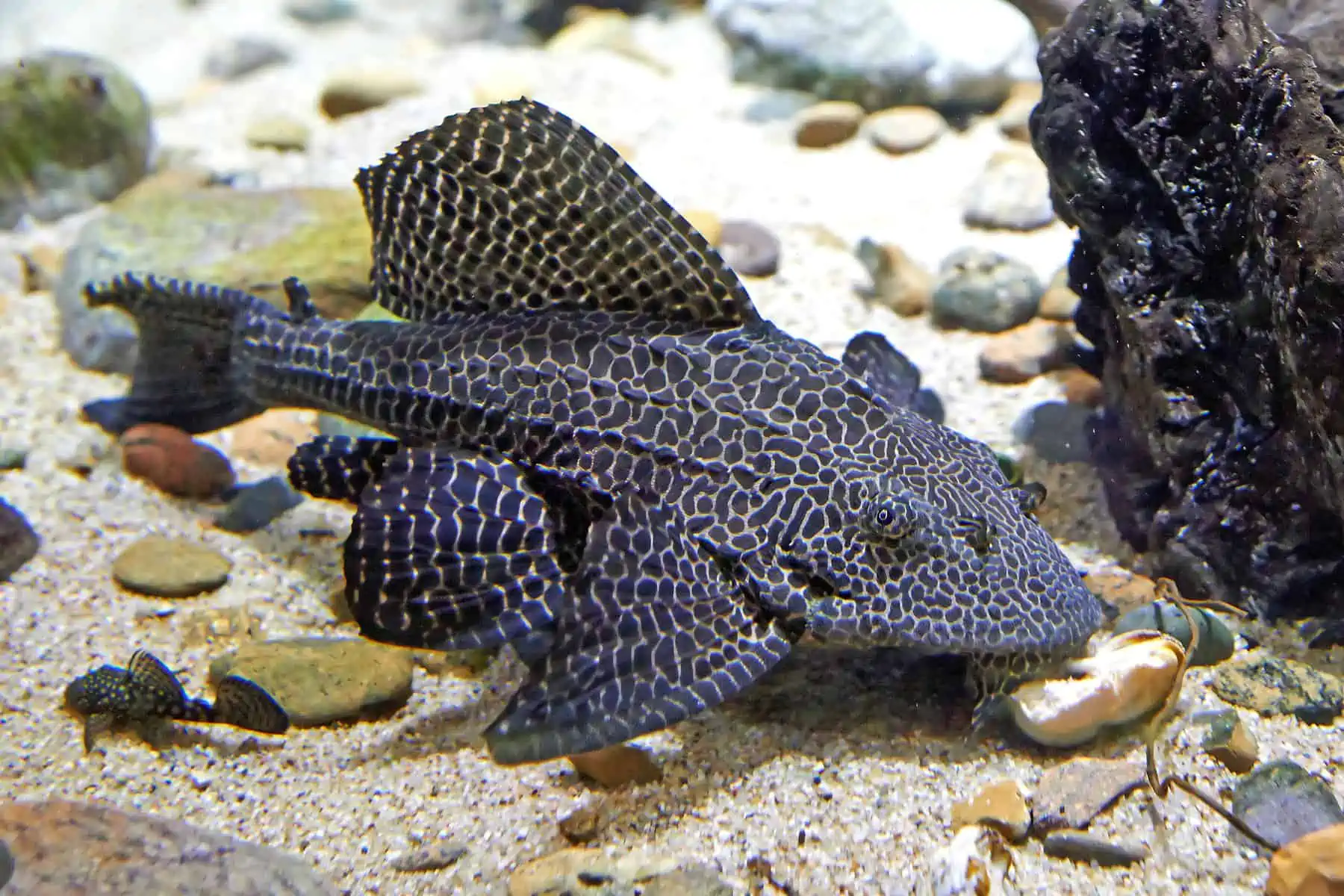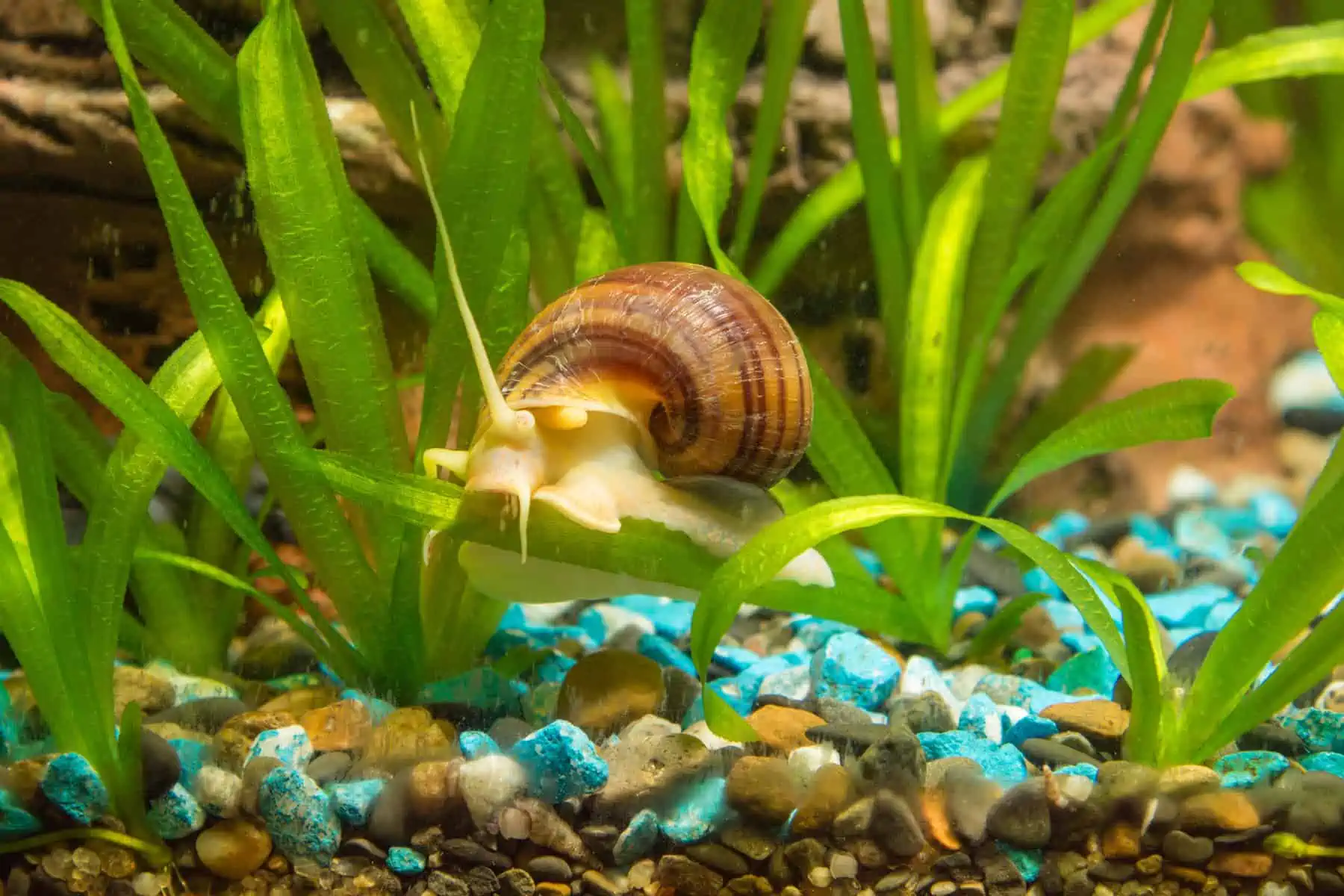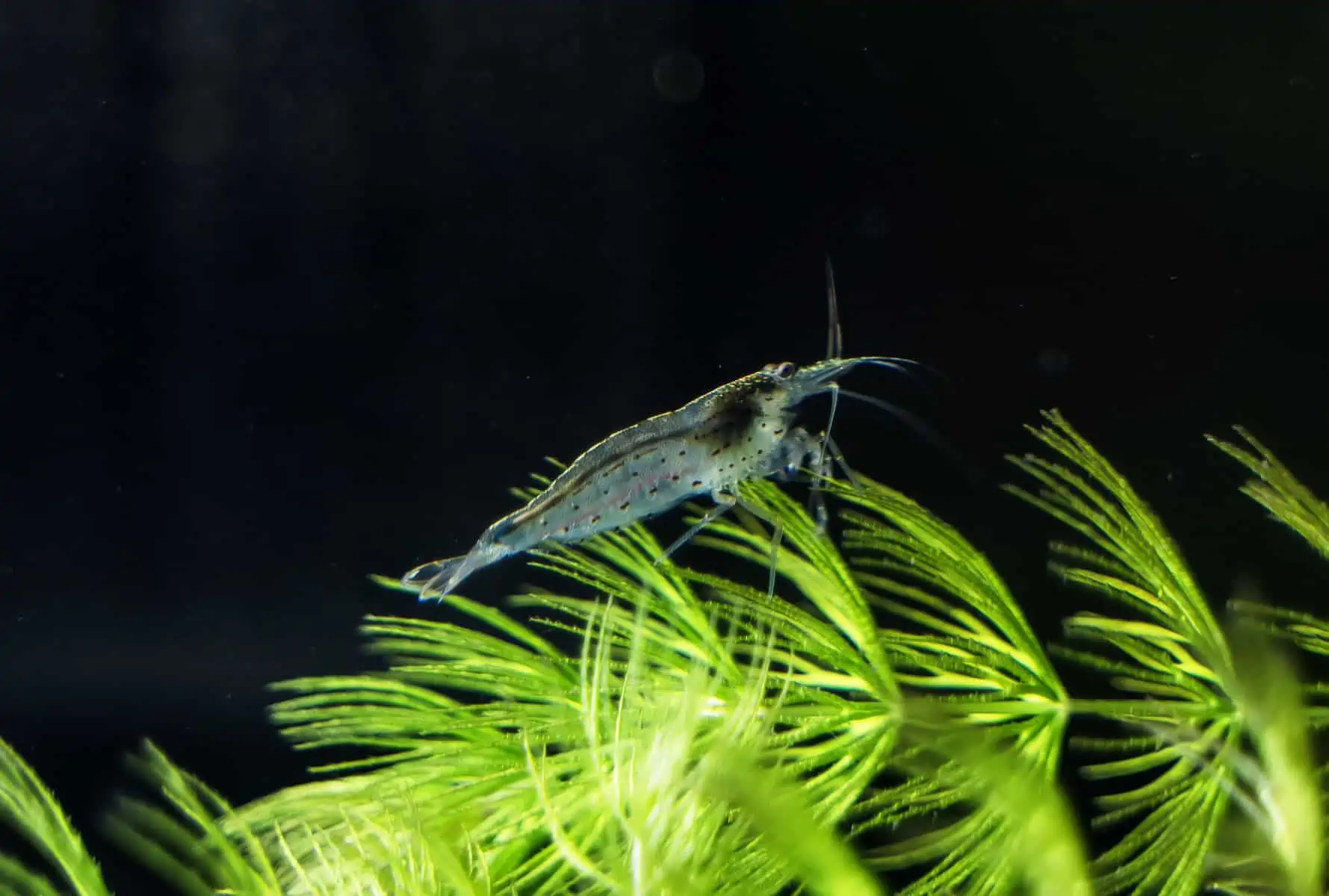If you have a freshwater aquarium, you know that maintaining a clean environment is one of the most important aspects of keeping your fish healthy.
Part of keeping things clean means removing waste, including fish poop. So, what eats fish poop in freshwater aquariums?
There are a few different creatures that can help keep your aquarium clean by eating algae, discarded food, and fish waste. There are even little guys that will even help keep the gravel clean! Let’s explore them…
Who Are the Clean-up Crew?
We always hear about these “cleanup crew” fish that people add to their aquariums to help keep things clean. But how do they actually help with cleaning?
These fish are known for consuming algae, uneaten food, and fish waste. As a result, having them in your tank can help maintain good water quality and clarity.
Some of the most popular freshwater “cleanup crew” fish include:
- Snails: There are many aquarium snails available, but the most common ones used for cleaning are Malaysian trumpet snails, nerite Snails, and Golden apple snails. These guys are great at eating algae and uneaten food that sinks to the bottom of the tank.
- Shrimp: Shrimp aid in the cleanliness and order of your aquarium. They’re excellent at eating algae, uneaten food, and fish waste.
- Plecos: Plecos are known for their algae-eating abilities. In addition to eating algae, they will consume uneaten food and fish waste.
- Corydoras catfish: Corydoras catfish are great at keeping the bottom of the tank clean. They will eat algae, uneaten food, and fish waste.
Though I have had various levels of success with different clean-up crews, I find that the best one is still me.
These fish/creatures generally explore looking for food or aquarium plant bits when they’re first added to the tank. In worst cases, they might nibble at dead fish as well.
Also, when your cleaners don’t find all the organic food leftovers, ammonia can build up— but only if you are overfeeding your fish.
You should know that the cleaning crew will defecate as well!
When Is the Best Time To Add a Clean-Up Crew?
Adding a clean-up crew to your aquarium is best when they can coexist peacefully and make great tank mates with your fish.
For example, Corydoras catfish do best in groups of five or more, so adding them might not be the best idea if you have a smaller aquarium.
Also, if there is too much leftover food gathering at the bottom of the tank, you can add bottom feeders such as loaches or plecos to help clean up.

Further, if algae is taking over your aquarium, you might consider adding algae-eating fish such as Otocinclus catfish.
When Is It Inappropriate To Add a Clean-Up Crew?
In addition to knowing when to do something, it’s just as important to know when NOT to do something.
Many fish keepers believe their fish clean-up crew can act as an all-purpose maid service. However, this is inaccurate and will ultimately result in the demise of your other fish if they’re not given the proper care.
In fact, overstocking your aquarium with a clean-up crew can flip your aquarium’s biological system, leading to a rise in ammonia and nitrite levels, which are harmful to fish.
As a result, it’s important that you only add as many cleaners as your aquarium can handle without overstressing the system.
Do Fish Eat Feces as a Part of Their Diet?
Many people have this common misconception that some fish species consume fish poop as part of their diet.
However, this is not the case because feces lacks essential nutrients for all living organisms’ growth and development.
However, you may notice various fish species smelling or nibbling on fish excrement, especially if it’s still fluttering about in the water before settling on the sand or gravel bottoms.
In fact, fish naturally consume everything that floats in the aquarium. Thus, when they ingest fish feces, it isn’t on purpose.
Instead, they most likely mistakenly ingested waste, thinking it was food. If you’re attentive, you’ll notice that, after tasting feces, they spit it back out.
Is It Necessary To Provide Food for the Clean-Up Crew?
The fact is that most aquarium clean-up crew fish are opportunistic feeders, which means they’ll eat just about anything they can find in the tank.
However, this doesn’t mean you should neglect them and not provide them with food.
While they may be able to find enough food on their own, it’s always best to provide them with a balanced diet, such as sinking algae wafers.
This will not only help them stay healthy, but it will also ensure they’re getting enough nutrition to perform their cleaning duties effectively.
Will Snails and Shrimp Consume Fish Waste in a Freshwater Tank?
Snails and shrimp are gladly willing to help you out by eating organic matter and other waste.

They look for food everywhere, from the gravel to the sand to the rocks, so that they can devour algae and decaying vegetation.
However, they will only consume fish feces if they are scavenging. They examine the sewage to see whether it is a nutritious source of food or not.
What Type of Snail or Shrimp Eats Fish Poop in Freshwater?
Many types of snails and shrimp can take on clean up duties in your aquarium. Some of the most popular options include:
- Malaysian trumpet snails
- Bladder snails
- Ghost shrimps
- Amano shrimp

Although they will eat fish feces if scavenging, I would not recommend relying on them to clean your tank thoroughly.
What Are the Drawbacks of Using Poop-Eating Fish To Clean Your Tank?
This is a common question among aquarists. As mentioned earlier, you must be very careful when adding fish to your aquarium because they can easily overstress the system.
This is especially true when using poop-eating fish as part of your clean-up crew.
Some of the drawbacks of using fish to eat fish feces include the following:
Incessant Amount of Waste
Although these creatures do a great job of consuming fish feces, they also produce a lot of waste.
So, if you’re not careful, you could end up with an incessant amount of waste in your fish tank.
At some point, the waste produced by the clean-up crew will outweigh the amount of waste they consume, leading to an increase in ammonia and nitrite levels. This can harm your other fish and may even lead to their death.
Your Fish Will Become Ill
With the increase in waste comes an increase in the likelihood that your fish will become ill. In some cases, the clean-up crew fish may transmit diseases to your other fish.
Also, increased ammonia and nitrite levels can lead to several health problems for your fish, including respiratory distress and gill damage. You might even end up with a lot of deceased fish!
This is why you should always be moderate when adding these awesome fish to your aquarium and ensure you’re not overdoing it with the clean-up crew.
Excessive Algae & Mold
Poor aquarium water quality and increased levels of waste can also lead to excessive algae and mold growth.
This can quickly take over your fish tank, making it difficult for your fish to breathe and causing great stress. In some cases, the algae and mold can be so bad that it kills the fish.
It’s More Work Than It’s Worth!
Let’s be honest. Feeding and caring for a bunch of fish constantly can be a lot of work. And, in some cases, it may not even be worth it because they may not do an adequate job of cleaning up your tank.
So, unless you’re prepared to put in the time and effort to care for them properly, you should consider other options for cleaning your aquarium water.
How To Remove Fish Poop in Your Freshwater Tank
Before getting started, remember that your tank contains two types of feces. Organic waste is the first, and inorganic waste is the second.
Organic waste typically dissipates quickly in water, so it doesn’t require much attention.
On the other hand, inorganic waste, such as fish feces, takes longer to decompose. As a result, it can quickly build up in your tank and cause problems.
Now that you know the difference, let’s look at removing fish feces from your freshwater tank.
Removing Fish Poop from Sand
We all know how frustrating it is to constantly have to do manual cleaning, it makes your hands dirty, and picking up fish poop seems like it takes forever!
Unfortunately, when you don’t spend an adequate amount of time cleaning your tank, the organic waste will start to break down and release harmful toxins into the water.
Therefore, you can use a small, hand-held vacuum to quickly and easily remove the fish feces from your sand.
To do this, remove all the fish from your tank and then all the rocks, plants, and decorations.
You can place the fish in a different bag or tank, but make sure to use water from their previous aquarium. This will stop them from being shocked by changes in temperature or water quality.
To avoid sucking sand into the filter while vacuuming, pinch the intake tube or use a filter at the front of the vacuum’s intake.
Additionally, rake the sand to get the fish’s excrement to rise to the surface and then siphon them. For more precise cleaning, consider using a turkey blaster or a smaller vacuum instead of a big one.
Removing Fish Poop from Gravel
The cleaning process of a gravel tank is more difficult than cleaning sand because fragments are trapped under the rocky floor.
However, you can vacuum the aquarium using a siphon vacuum as you would if you were removing fish poop from sand.
Similarly, remove all the fish from your tank before starting to clean. Then, use a turkey baster or small vacuum designed for gravel tanks to remove the fish poop from your gravel.
To avoid damaging the gravel, make sure to vacuum slowly and carefully. Once you’re finished vacuuming, rinse the gravel with fresh water to remove any residue.
If you don’t have a vacuum, here’s the manual process: move your fish to a temporary location.
Then, pour all the water out of the tank into a bucket. Finally, rinse the fish tank and gravel using a shower head or hose until everything is clean.
Once you’re finished, refill the tank with clean, dechlorinated water and return the fish to their home.
Removing Fish Poop Using an Aquarium Filter & Wavemaker
I think the best way to remove fish feces from your freshwater aquarium is by using an aquarium filter and wavemaker.
The filter intake sponge will help to remove any physical debris, such as fish poop particles, from the water, while the wavemaker will help to circulate the aquarium water and keep it clean. Also, a fish tank pump will help to aerate the water and keep the fish healthy.
Technically, you don’t need both a filter and a wavemaker, but I find that they work best together. To use this method, simply install the filter and wavemaker in your tank according to the instructions. Then, let them do their job and enjoy a cleaner aquarium!
Last Words
Your cleaner fish crew will help to keep your aquarium clean, but they can’t do everything. As a result, you’ll still need to remove tropical fish feces from your freshwater tank on a regular basis.
Remember, the best way to remove fish feces is to vacuum it from the gravel or sand using a small, hand-held vacuum. You can also use an aquarium filter and wavemaker to help keep your tank clean.
I hope this article was helpful. Do you have any questions or tips on removing fish feces from a freshwater aquarium? If so, please share them in the comments below!


